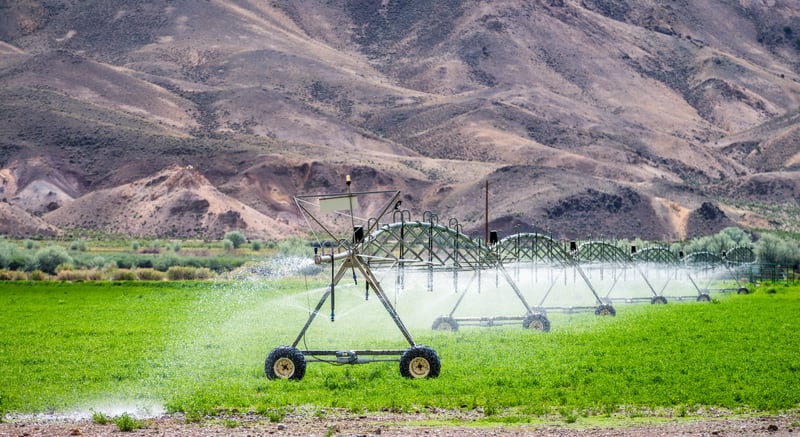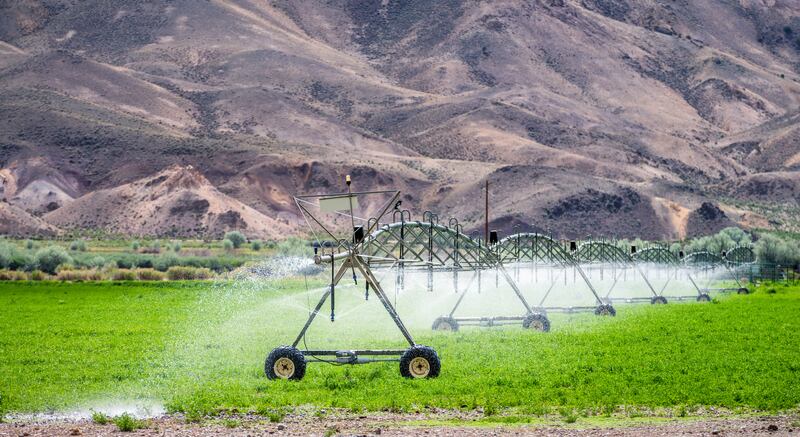The analysis from Morningstar Sustainalytics focused on the gigantic Ogallala Aquifer in the Great Plains region in the US and found water stresses like water depletion, old pipes, irrigation, droughts and polluted water were being exacerbated by widespread water mismanagement by food companies, farmers, government bodies, water utilities and others.
It found 69 out of 114 packaged foods companies (60%) operating in the Great Plains area had weak or non-existent water management practices. Another 49 of 114 firms (43%) in related food supply chains had similarly poor water stewardship records and plans.
Report co-author, Matthew Howard, VP of Water Stewardship at Milwaukee-based The Water Council, called on food firms to “act now to mitigate risks” with even basic measures such as fixing leaks, metering water use and “adding water aspects to existing management systems.”
General Mills and Tyson Foods were called out for leading the way in this kind of pragmatic water care. “Both companies have water stewardship programs to mitigate water-related risk, including water efficiency goals and actions, which will result in reducing freshwater use.”
Initiatives included GM giving technical aid to farmers and ranchers to help them develop water management plans.
Tyson had developed quality and quantity water plans for two Great Plains sites that adhered to Alliance for Water Stewardship (AWS) Standards.
Changing waterways: The difficult path to “Transboundary water governance”
But given the complex web of actors and threats to the Ogallala Aquifer which supplies 80% of America’s drinking water and covers eight US states (South Dakota, Wyoming, Nebraska, Colorado, Kansas, Oklahoma, Texas, and New Mexico), Howard doubted if there existed, “enough political will to make the hard choices necessary to slow depletion and even lead to meaningful recharge.”
“Unfortunately, I think things will get worse before they get better,” he told FoodNavigator-USA.
“This is exactly why it’s important for businesses to do the necessary work now on direct operations in the region to help them build more resilient operations and supply chains.”
Co-author Kata Molnar, who is the Amsterdam-based water thematic expert at Morningstar Sustainalytics, added it was in the interests of all Ogallala Aquifer stakeholders to initiate, “transboundary water governance.”
Building such a vast network was challenging but began, “at the direct facility level where you have people on the ground who really understand the issues and can escalate them to the corporate level, if needed.”
To achieve this, however, firm’s needed, “proper governance systems in place for water management”.
“I’ve seen water creeping up at the risk ladder from being a lower priority site-level risk to the enterprise scale, impacting the management of the whole global portfolio of assets,” Molnar said, encouragingly.
Water management best practices
Howard called out the Texas Water Action Collaborative and the Lake Winnipeg Basin Project as good examples of collective water stewardship delivering significant results in areas like:
- restoring wetlands that feed source water for businesses;
- running community education campaigns on the importance of water conservation;
- funding tech test pilots on water quality sensers that help companies control effluent.
The report noted the water security issues faced by the Ogallala Aquifier are not unique. “The story of this aquifer and stresses placed upon it by water users is replicated across the globe and will eventually leave few supply chains untouched.”
Molnar said projects led by her company were underway in Brazil and South Africa. These initiatives sought to, “encourage concrete opportunities for companies linked to the same catchment to find corporate and other partners for joint efforts and have the best chances of the engagement contributing to tangible impacts on the ground.”
See-through water management
Food businesses, such as Dean Foods, that have notched significant water management progress could gain independent verification of its actions – and exposure – from the likes of The Water Council, WAVE (Water Stewardship Verified) or international standards like ISO14001.
“Then transparently disclose risks, actions and goals,” said Howard.
For firms only now starting out on their water stewardship journey, Molnar recommended a more basic approach.
“That means mapping out their enterprise-wide material risks, impacts, and opportunities, and from there identifying that water is on that heatmap, and understanding the extent of their exposure first from a broader ESG perspective.”
She added: “Then, assessing what are the financially material consequences that failure to mitigate water related risks at the right places can cause, and plan from there.”
Water systems linked to the Ogallala Aquifier include the Colorado River and Great Lakes Basin.
Without significant collective water management stewardship, it is estimated 70% of the Ogallala Aquifier will be drained by 2070.
A recent Global Risk Report from the World Economic Forum found the 10 most egregious risks to humanity were linked to water.


